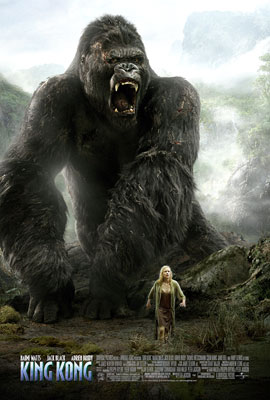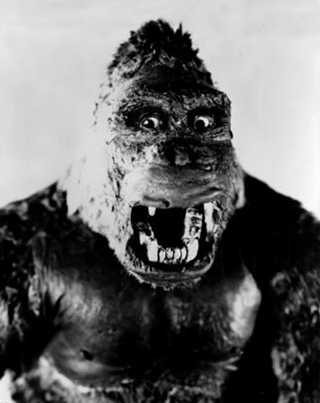 Previously I interviewed Joshua Bellin, author of Framing Monsters: Fantasy Film and Social Alienation (Southern Illinois University Press, 2005), where he interacted critically with various fantasy films. While horror and science fiction films have received a lot of critical analysis, this has not been the case with fantasy films. Thankfully, Bellin moves beyond this in order to grapple with what fantasy films might tell us about ourselves and our social interactions.
Previously I interviewed Joshua Bellin, author of Framing Monsters: Fantasy Film and Social Alienation (Southern Illinois University Press, 2005), where he interacted critically with various fantasy films. While horror and science fiction films have received a lot of critical analysis, this has not been the case with fantasy films. Thankfully, Bellin moves beyond this in order to grapple with what fantasy films might tell us about ourselves and our social interactions.
I recently reapproached Bellin about his thoughts on two of the King Kong films. In his book Bellin argues that early twentieth century racism is expressed, and I wondered how this might have changed over the decades with the release of Peter Jackson’s take on the great ape in 2005. Belling was willing to discuss this in his second appearance at TheoFantastique.
TheoFantastique: Josh, welcome back and thanks for sharing some further thoughts on fantasy films, in this case a contrast between the original King Kong and Peter Jackson’s more recent take on the story. In your book and in our previous interview you engage the original film critically to note that it incorporates aspects of racism from 1930s America. Can you summarize some of that again as an initial point of departure before we look at the most recent treatment of this film?
Joshua Bellin: Sure. As I argue in my book, the original Kong was released during a time of considerable racial tension and conflict in the U.S. — a time when African-American emigration to urban centers was accelerating, southern and midwestern lynch law was coming to a gory close, and stereotypes of African Americans in minstrel shows and other forms of mass entertainment were being contested by artists such as those identified with the Harlem Renaissance. So persistent structures of racial inequality were being challenged, and in this climate the dominant culture responded with ever-more-desperate attempts to keep the races physically and ideologically separate. Kong takes part in that project: it’s a movie that seeks to draw absolute boundaries between white society, as represented by Manhattan, and black, as represented by Skull Mountain Island, and that punishes the black beast who threatens those boundaries.
TheoFantastique: A number of decades have transpired since the original film, and America has changed in terms of its treatment of race. In your view, does Peter Jackson’s version of Kong include elements that touch on race or does it engage other aspects of Western culture?
Joshua Bellin: I think it’s impossible to do a version of Kong that isn’t steeped in racial history and politics; the story it tells is just too deeply rooted in the racial imaginary of Western society. In the 1780s, slaveowner Thomas Jefferson told white readers that black men preferred white women just as orangutans preferred black women; in the 1970s, the producers of the first Kong remake put out advertisements seeking an “ape-like” black actor to play the role of Kong. For better or for worse, Kong tells us how we as a society think about race.
That being said, I thought the Jackson film also provided some interesting commentary on contemporary Western imperialism: by turning Denham into an exploitative slimeball instead of the “square guy” he ends up being in the first film — and by linking his acts of exploitation to filmmaking — the Jackson Kong offered insight into the role of the media in packaging Western aggression for the hometown audience. Along the same lines, it was interesting — if perhaps a bit too obvious — that Jackson superimposed the story of Heart of Darkness over the Skull Mountain Island expedition; this framing of the voyage through Conrad’s rumination on the rape of the Congo meant that you could never view the expedition as pure adventure, that you were always aware of the dark underside of such overseas escapades.
 TheoFantastique: How does it touch on racial politics in ways that are different from the original film?
TheoFantastique: How does it touch on racial politics in ways that are different from the original film?
Joshua Bellin: I was fascinated by the ways in which the Jackson film attempted to comment on the racial contexts of the original. Most notably, Jackson took the dance number from the original film’s Skull Island sequence, reproducing the costumes, choreography, and score, and put it on stage as the prelude to Kong’s New York premiere. I thought that was a brilliant move: to expose the racist spectacle of the original, to show that the images of blackness on which the original film relied were literally fantasies staged by hysterical whites. That was a really smart, inspired piece of cinematic critique.
At the same time, though, I felt that Jackson’s film was far less successful in querying its own racial stereotypes. Most prominently, there were the Skull Islanders: absolutely grotesque caricatures of non-white savagery, exceeding even the jungle-film heavies of the original film. By the same token, I felt that the subplot involving the orphan Jimmy and his African-American protector was both weak — an obvious attempt to ward off any accusations of racism the film might meet — and irrelevant, as the black father-figure was killed off by Kong early in the film and absolutely nothing came of it. And there’s really no escaping the underlying racist conceit that shapes the film: whiteness is represented as the ultimate object of desire (Kong tears apart his black “brides” while rescuing Ann at all costs), and it’s whiteness, in the end, that must be saved by killing the black beast. So I’d say that unless you deconstructed that premise — and Jackson’s film fails to do so, in my opinion — you’re going to have a film that reproduces as much as it questions racist ideologies.
TheoFantastique: As I’ve thought about Jackson’s film I wonder what your feedback would be to changes in Kong and Ann Darrow and their interactions. In the original Kong is a viscious, destructive beast who kills human beings at will and who is feared throughout the film by Ann. In Jackson’s film Kong is still a giant animal but his reaction to Ann is presented much more intimately, and her reaction to him is as well. It may not be a romantic love but she definitely has compassion on Kong and while he searches New York for her to no avail it is she who seeks him out. On top of this during their final moments together there is the “dancing” scene on the ice, and she signals the airplanes off in one of their final approaches on top of the Empire State Building. Unfortunately, Jackson left Ann on top of the building and did not bring her into engagement with Kong’s corpse, or wrap this up in some other fashion, leaving it with the Denham line from the original. In your view, even with the problematic racial elements lingering in Jackson’s treatment, isn’t the depiction of Kong and Darrow’s reaction at least a softening of that?
Joshua Bellin: I found the Ann/Kong relationship in this film touching at times, though really, it’s not that much of an improvement over the ’76 fiasco, where there was a similar affection between the two (and a similar scene in which the Ann character, Dwan, tried to save Kong from the airplanes). What bothers me, nonetheless, is the film’s insistence that it’s only a white woman whom Kong could find “beautiful” (the sign that Ann teaches him). The black brides are ripped limb from limb; the white bride is cherished. That doesn’t make the relationship between Kong and Ann any less interesting, but it does point to the larger racial assumptions that underlie that relationship. So my take on it wouldn’t be that the relationship softens the racism; it would be that the racism is fundamental to the relationship. But then, that’s my theme song when it comes to fantasy films!
TheoFantastique: Josh, thanks again for talking about some of my favorite fantasy films, and helping us understand how they reflect us for good and ill.





I just wrote a response to this on my website:
http://unspeakablehorror.com/journal/2009/3/16/whistle-to-open-worlds.html
Thanks for enjoying the interview, Bellin’s work, and for picking up the topic at your own site. It’s great to see fellow LOTTD folks engaged in cross-pollenization.